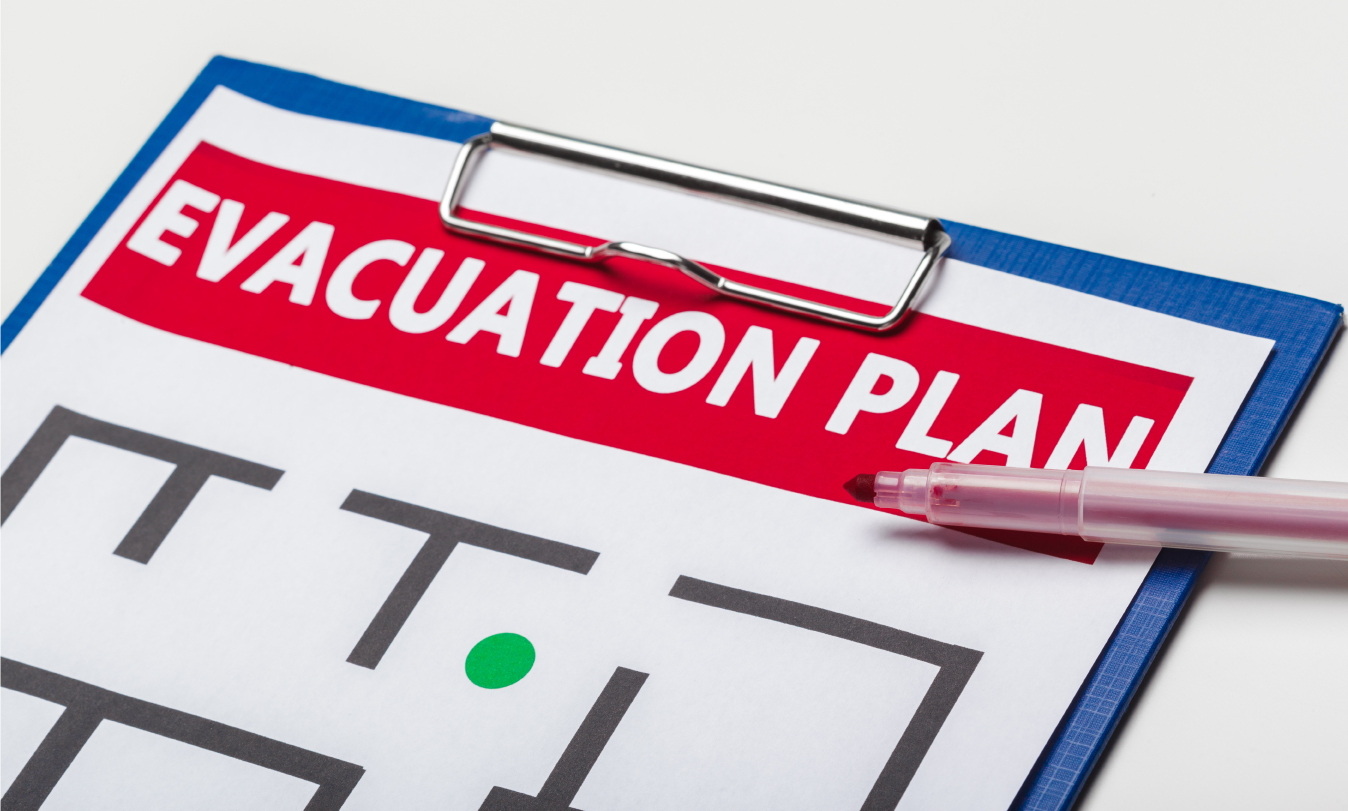TxSSC
A Parent's Guide to School Safety Toolkit
2.4 Standard Response Protocol (SRP)


The Standard Response Protocol (SRP) was created by the parents of Emily Keyes, a 16-year-old girl who was killed after being held hostage in Platte Canyon High School in September 2006. Emily sent a text to her family saying “I Love U Guys” just prior to her death. After extensive research on ways to improve safety in educational settings, Emily’s parents, John-Michael and Ellen Keyes, established the “I Love U Guys” Foundation. Research indicated the need for districts to implement measures that would minimize confusion and reduce valuable reaction time during a crisis. The SRP and the Standard Reunification Method (SRM) were created from this need.
Standard Response Protocol (SRP) must now be used in district EOPs to better facilitate communication between law enforcement, emergency services, district employees, and the public. For example, a school administrator initiates a “Hold” response to a medical emergency (such as a student having a seizure) reported in a campus hallway. By following the standard responses associated with the directive to “Hold,” students and staff remain in their classrooms, keeping the hallway clear. This minimizes students’ exposure to the incident and provides responders a chance to focus on assessing and assisting with the emergency. It also allows responders to get to the student quickly because they can run down the hallway, rather than navigate “upstream” through hundreds of students and staff.
How does implementing the SRP protect students and staff?
The SRP system provides districts with standard terminology to signal specific actions needed to safely respond to a variety of situations which may pose a risk to the safety and well-being of students and staff. The protocol also supports age-appropriate development of critical thinking skills prior to the existence of a crisis. The SRP encourages an improved sense of situational awareness, and it encourages open communication between students, staff, and parents about the importance of remaining safety conscious.

The SRP provides the opportunity for every student, staff, and parent to become familiar with one set of directives. These directives quickly communicate that an emergency exists and which actions need to occur to protect and preserve a safe environment. Texas law now strengthens the requirements for school safety drills. Schools must follow state rules to make sure all students and staff have equal access to safety during a disaster or emergency situation. This includes ensuring that students with an Individualized Education Program (IEP) or a 504 Plan have the accommodations they need during mandatory drills, so they can participate safely and fully.
What situations or events can prompt the implementation of the five SRP directives?
There are numerous reasons a campus administrator might activate SRP directives to ensure the safety and welfare of students and staff. As there are various scenarios and responses, it is important for all students and staff to attend training which occurs at the beginning of each academic year, and participate in all drills, so they know how to respond in each event. If you or your child are on campus and hear one of the SRP directives, take it seriously and follow any instructions given. If the SRP directive announced is part of a training drill or exercise, the school administrator will include that statement in their announcement. Regardless of whether the directive is given as part of a drill, or imminent threat, it is essential the response actions do not vary from what was taught in the initial training lessons and practiced throughout the year. The actions for each step can also be found in the K-12 Standard Response Protocol Toolkit. Drills practice these steps. See 2.5 Training and Drills for more information.
What are the five directives associated with the SRP?
The five terms used in SRP directives are: Hold, Secure, Lockdown, Evacuate, or Shelter. Examples of each directive, and the public address, or what is announced via an intercom or other public address system, along with the response actions to be taken for each directive are listed below. In some scenarios, knowing how to respond can be the difference between life and death.

"Hold”
The public address for Hold is: "Hold in your room or area. Clear the halls" and it is repeated twice each time the public address is performed. The primary objective is to keep students out of the hallways in a specific area for a brief period of time. Examples include an emergency medical situation, an altercation that needs to be addressed, or a large spill in a hallway floor which may pose a risk to students.

"Secure"
The public address for this directive is “Secure! Get Inside. Lock outside doors” and it is repeated twice each time the public address is performed. The response action schools take is to secure the perimeter of the buildings and grounds during incidents that pose a threat or hazard outside. Secure uses the security of the physical facility to act as protection to deny entry. Examples include a violent criminal in the area being pursued by law enforcement or a stray wild animal on the school property that appears aggressive in nature.

"Lockdown”
The public address for this directive is "Lockdown! Locks, Lights, Out of Sight!" and it is repeated twice each time the public address is performed. The response action schools take is to secure interior portions of school buildings and grounds during incidents that pose an imminent threat of violence inside the school. The primary objective is to quickly ensure all students, staff and visitors are secured away from immediate danger. Examples include an intruder or an active shooter.

"Evacuate”
The public address for this directive is: "Evacuate! (A location can be specified)." and it is repeated twice each time the public address is performed. For example, "Evacuate! To the Flag Pole. Evacuate! To the Flag Pole." The response action schools take is to quickly move students and staff from one place to another. The primary objective is to ensure that all students, staff, and visitors can quickly, and in a safe, orderly manner, move away from the threat. Examples include the possibility of a fire, or when there is a need to clear the building due to a chemical spill or other such hazard inside the building.

"Shelter”
There are two different forms of “Shelter” directives. One is a “Shelter-in-place” and the other is referred to as “Shelter for severe weather.” The public addresses for a shelter directive should include the hazard and the safety strategy. The public address is repeated twice each time the public address is performed.
If the “Shelter-in-place” directive is announced, the response action schools take is to quickly move students, staff, and visitors indoors, perhaps for an extended period of time, because it is safer inside the building than outside. Affected individuals may be required to move to rooms without windows or to rooms that can be sealed. Shelter-in-place for hazmat examples include train derailment with chemical release or smoke from a nearby fire.
If the “Shelter for severe weather” directive is given, the response action schools take is to quickly move students, staff, and visitors indoors, perhaps for an extended period of time, because it is safer inside the building than outside. For severe weather, depending on the type and/or threat level (“watch” versus “warning”), affected individuals may be required to move to rooms without windows on the lowest floor possible or to a weather shelter.
What responsibilities do you, as parents, have regarding the SRP?
- Be familiar with the terminology in case a directive is activated while you are on campus.
- Follow the directives until the “All Clear” is given.
- Review the actions for each of the five responses with your child. Stress the importance of active listening during instructions and following any SRP directives given without hesitation.
- Be flexible and understanding when attempting to remove your child from school during the activation of SRP directives. There may be times when removing your child from class or school is not allowed for safety reasons.
- Be patient with communication. During a situation involving a possible threat or hazard, school personnel must remain focused on the safety and well-being of all students. Please minimize unnecessary contact with your child or the school staff, as there is a possibility that incoming calls or texts could jeopardize their safety. District personnel will provide information on the situation, as well as access to your child as soon as possible. Ensure that your contact information is up to date with valid cell phone numbers and email addresses.
What training or instruction is involved in the Standard Response Protocol on a typical K-12 campus that has adopted the SRP?
- Teachers and students are all initially provided training in an interactive lecture format which allows them to become familiar with the five (5) terms for the response directives utilized in the Standard Response Protocol – “Secure”, “Lockdown,” “Evacuate,” “Shelter,” and “Hold” and the actions that should follow.
- Most districts provide you with information regarding the protocol they use, such as the SRP, including an explanation of what your child is being taught and what you can expect if the campus activates their SRP. Ask your school or district what protocol they use if you have questions.
- SRP posters are visible near entrances to areas where students and staff gather, such as each classroom, cafeteria, and gymnasium, for quick reference and review.
- SRP materials are available in Spanish on the “I Love U Guys” Foundation website.
The Texas School Safety Center, in conjunction with the “I Love U Guys” Foundation, offers Standard Response Protocol and Standard Reunification Method training to all K-12 public and open-enrollment charter school staff free of charge. Materials are offered to schools and provided free of charge on the “I Love U Guys” Foundation website.
-
Resources
- Standard Response Protocol Video